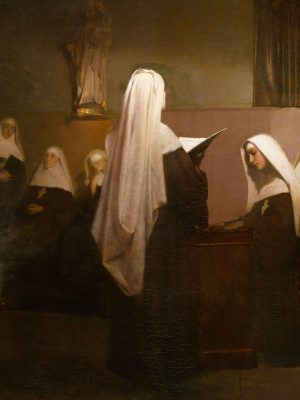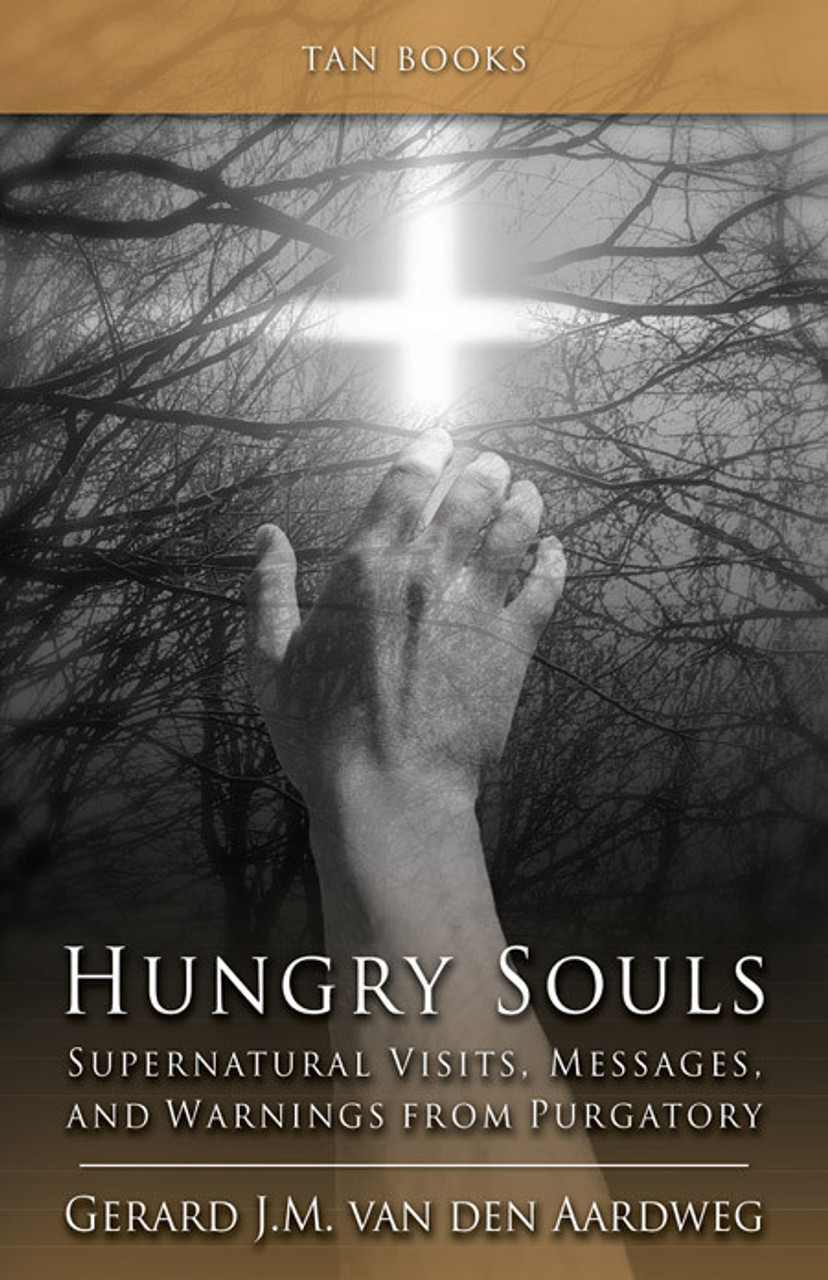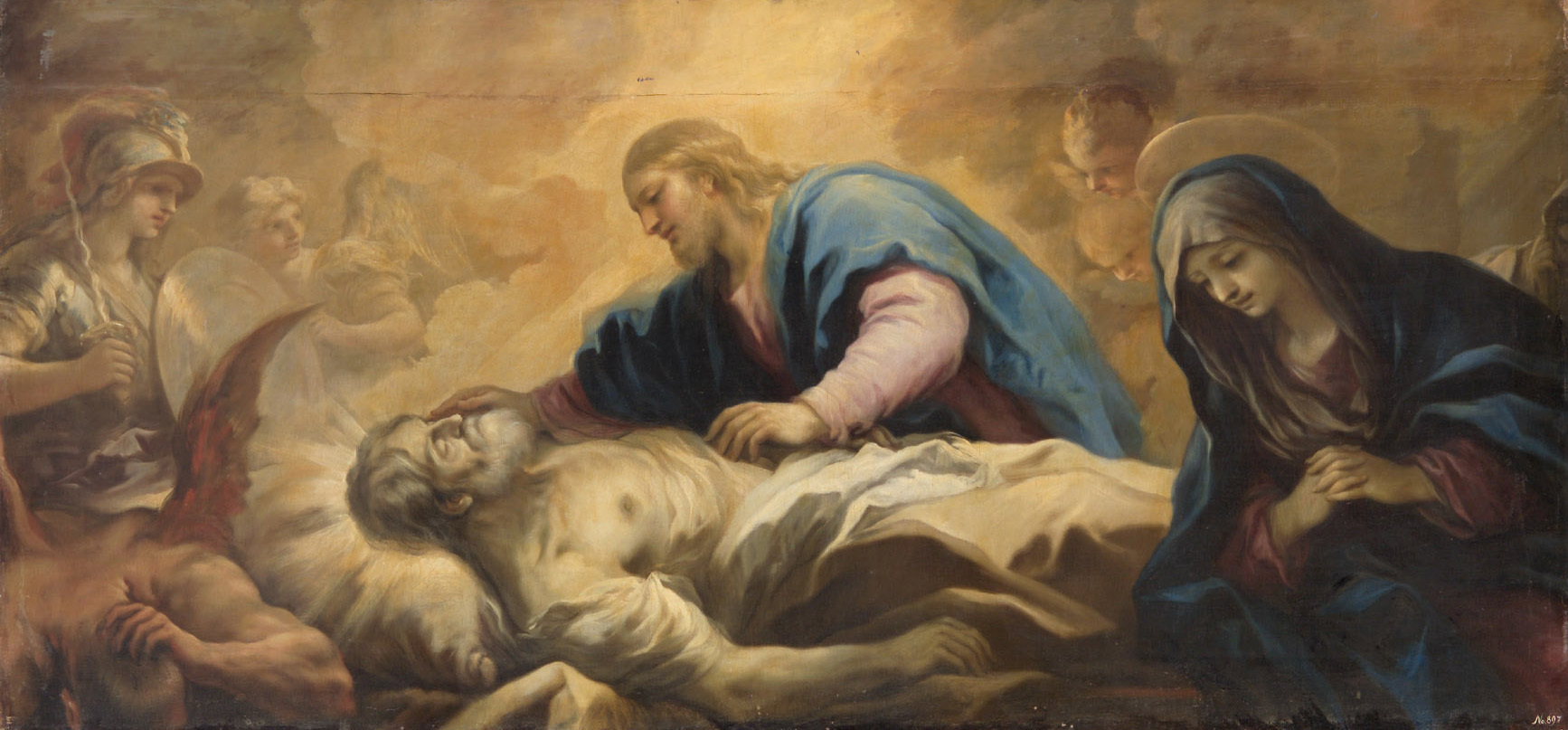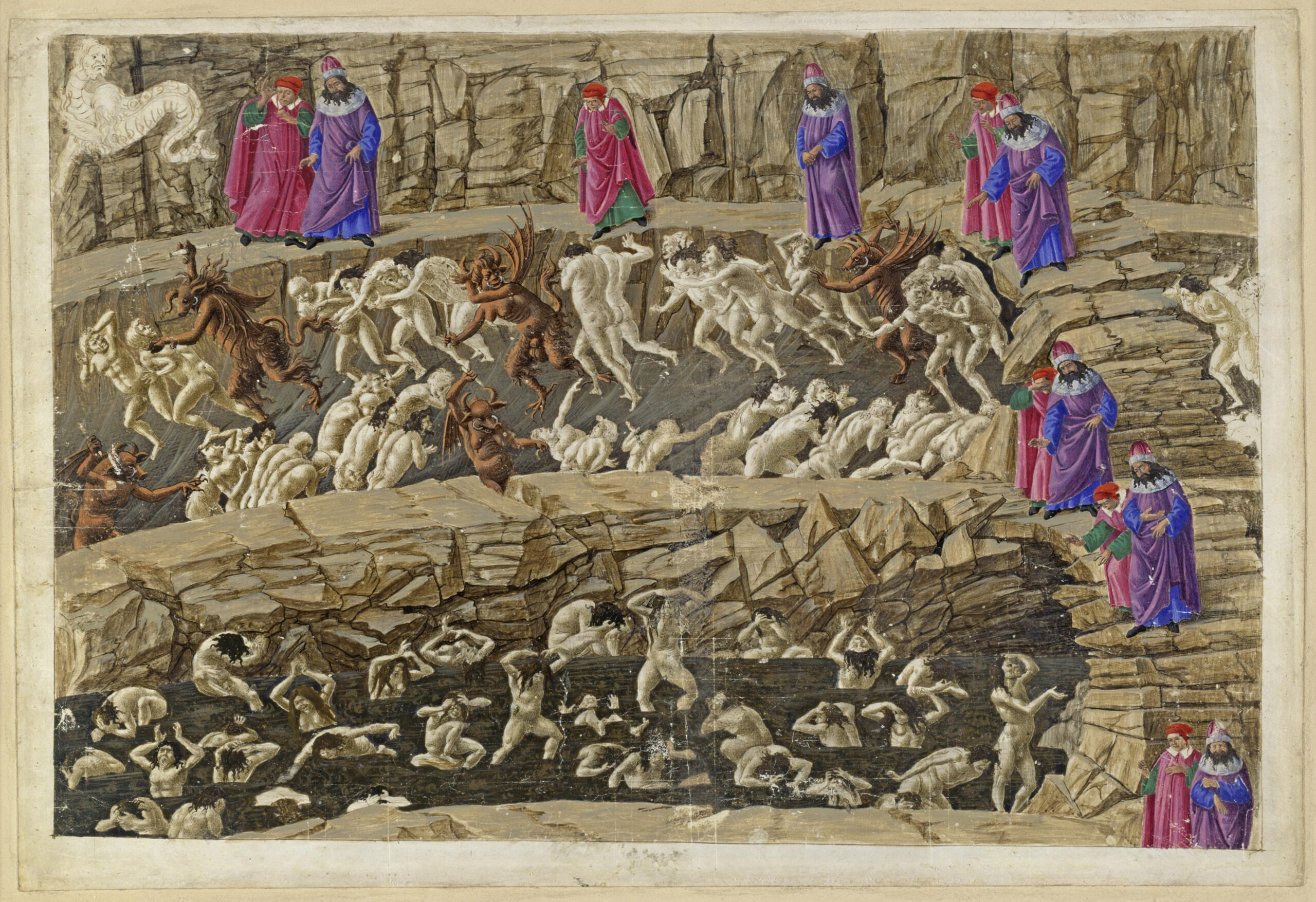Hungry Souls recounts these stories and many other trustworthy and Church-verified accounts of earthly visitations from the dead in Purgatory. Read on for an account of Saint Faustina’s visit from a deceased sister.
Within two months, the sacrifices of Eugenie von der Leyen had carried both Fritz and old Heinz out of the pit of their torments into a state of contentment and peace. That must have been the limit God’s justice had, so to speak, put to His mercy; Jesus Himself had hinted at the requirements of His justice as “opposed” to His mercy when He spoke to St. Faustina these beautiful, moving words on Purgatory: “My mercy does not want this, but justice demands it.” Old Heinz was aware of it—witness his remark, full of abandonment to God’s adorable will: “God is just, the torment is finished, not the punishment.” Still “far” from God, he suggested that he had to suffer for a long time the pain of unfulfilled desire for God.
Fortunately, many other souls—Eugenie’s experiences comprised a few of these cases too, and many others are encountered in the stories about other famous helpers of the poor souls, such as Maria Anna Lindmayr, or the Blessed Sister Anne Catherine Emmerich (1774–1824)—can be helped straight to Heaven. At times, one may get the impression that they seem to belong to a class of “milder cases.” An example is the soul of the deceased Sister who belonged to the same congregation as St. Faustina, to whom she appeared shortly after her death.
It happened probably only a few weeks after the guardian angel of this (recently canonized) saint had taken her to Purgatory—it was at the start of her monastic life—where she was told that the greatest suffering of the soul is its longing for God. That journey was apparently intended to imprint on her soul the need to carry the mercy of Christ not only to this world but also no less to the next. Significantly, Sister Faustina wrote that “since that time, I am in closer communion with the suffering souls,” and she was to stay that way.
On April 29, 1926, Faustina’s diary reads, “A Sister [Henry] was dying. A few days later she came to me and bid me to go to Mother Directress of Novices . . . and tell her to ask her confessor . . . to offer one Mass for her and three ejaculatory prayers. At first I agreed, but the next day I decided I would not go to Mother Directress, because I was not sure whether this had happened in a dream or in reality. And so I did not go.”
Every mentally normal person will probably doubt himself when faced for the first time with the speaking ghost of a departed person, and will be inclined to decide it must have been an illusion. This was certainly the case for 21-year-old Sister Faustina, who evidenced no sign of overexcitement. The continuation of the story indicates again a healthy critical attitude:
The following night the same thing was repeated more clearly; I had no more doubt. Still, in the morning I decided not to tell the Directress about it unless I saw her [Sister Henry] during the day. At once I ran into her in the corridor. She reproached me for not having gone immediately, and a great uneasiness filled my soul. So I went immediately to Mother Directress and told her everything that had happened to me. Mother responded that she would take care of the matter. At once peace reigned in my soul, and on the third day this sister came to me and said, “May God repay you.”
Sister Faustina (along with Padre Pio) represents the modern canonized saints who have distinguished themselves as helpers of the poor souls. One cannot expect it to be otherwise. How could a saintly person, who has made much progress on the way to perfection because of his love of God and neighbor, not be more than on average charitable to the dead? St. Faustina was called to be the modern apostle of Divine Mercy. It is a good thing, therefore, to realize that her apostolate included, logically enough, providing a good example to our age on being merciful to the suffering souls in Purgatory.
ooo
This article is taken from a chapter in Hungry Souls by Gerard J.M. van den Aardweg which is available from TAN Books.









